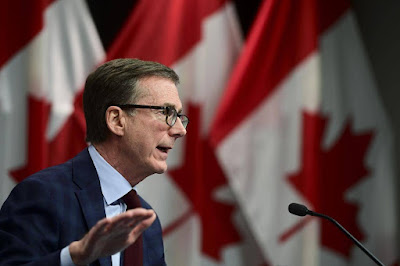Overview: Equities, bonds, and the dollar begin the new week on a firm note. Japanese, Chinese, Australian, and New Zealand equities advanced in the Asia Pacific region. Europe's Stoxx 600 is snapping a three-day decline, and US futures are 0.25%-0.35% higher. The US 10-year yield is a little softer at 1.48%. European benchmark yields are mostly 1-2 bp lower, and near 0.71%, the UK Gilt's yield is at a three-month low. The dollar is rising against all the major currencies and is 0.3%-0.45% higher against most. The Canadian dollar and sterling are the most resilient. Among emerging market currencies, the Chinese yuan continues to defy official signals to eke out a small gain. The Turkish lira is off more than 2%, after having dropped 4% initially.
Topics:
Marc Chandler considers the following as important: 4.) Marc to Market, 4) FX Trends, Australia, Canada, China, Currency Movement, Featured, FOMC, Japan, Mexico, newsletter, South Korea, Switzerland, Turkey, U.K., USD
This could be interesting, too:
Nachrichten Ticker - www.finanzen.ch writes Die Performance der Kryptowährungen in KW 9: Das hat sich bei Bitcoin, Ether & Co. getan
Nachrichten Ticker - www.finanzen.ch writes Wer verbirgt sich hinter der Ethereum-Technologie?
Martin Hartmann writes Eine Analyse nach den Lehren von Milton Friedman
Marc Chandler writes March 2025 Monthly
Overview: Equities, bonds, and the dollar begin the new week on a firm note. Japanese, Chinese, Australian, and New Zealand equities advanced in the Asia Pacific region. Europe's Stoxx 600 is snapping a three-day decline, and US futures are 0.25%-0.35% higher. The US 10-year yield is a little softer at 1.48%. European benchmark yields are mostly 1-2 bp lower, and near 0.71%, the UK Gilt's yield is at a three-month low. The dollar is rising against all the major currencies and is 0.3%-0.45% higher against most. The Canadian dollar and sterling are the most resilient. Among emerging market currencies, the Chinese yuan continues to defy official signals to eke out a small gain. The Turkish lira is off more than 2%, after having dropped 4% initially. Intervention at the end of last week failed to have a lasting impact, and the central bank is expected to cut rates again later this week. The JP Morgan Emerging Market Currency Index is giving back last week's 0.2% gain plus more today. It was the first weekly gain in five weeks. Gold is quiet in the upper end of the pre-weekend range, holding above $1780. January WTI is firm but capped near the 20-day moving average (~$72.80). US natgas is firm after falling 5% last week. Dutch gas is up 8% to new two-month highs. It has a six-week rally in tow, during which time it has gained a little more than 60%. Industrial metals are higher too. Iron ore snapped a three-day air pocket and gained it all back and more with its 6.5% rally today. Copper has steadied after falling almost 2.5% in the last two sessions.
Asia Pacific
The results of Japan's Tankan survey were in line with the talk we have picked up that while the new government, vaccination efforts, and fiscal stimulus are helping fuel the economic recovery, businesses are not yet convinced that significant change is taking place. Sentiment among large manufacturers was steady at 18, and the outlook ticked lower. The improvement in sentiment among the large non-manufacturers was more pronounced (9 vs. 2). However, the outlook was subdued at 8 (from 3). Capex plans from the large businesses were softer than expected at 9.3% (from 10.1%). Sentiment among the small companies improved, but the diffusion index and the outlook remained negative.
South Korea reported strong traded numbers for the first ten days of December (exports 20.4% and imports 42.3% year-over-year). Seoul was busy. Its foreign minister met with high Japanese counterpart on the sidelines of the G7 meeting and struck a cooperative tone. South Korea's President Moon met with Australia's Prime Minister Morrison and struck a A$1 bln weapon deal for self-propelled howitzers (which have already been purchased by other countries, including India and Turkey). South Korea, however, will not be participating in the diplomatic boycott of the Winter Olympics, citing the need for Beijing's cooperation to denuclearize the peninsula.
The US dollar remains within its recent range against the Japanese yen (~JPY113.20-JPY113.95). The 20-day moving average is at the top of the range, and it has not traded above it this month yet. An option for almost $400 mln at JPY114.00 expires today. It is the fifth session that the dollar has not traded below JPY113.20. The Australian dollar's rally stalled near $0.7185 last week and is testing the lower end of its three-day range (~$0.7130) in the European morning. Support is seen in the $0.7090-$0.7115 area. The highlight of the week is the November jobs report, which is expected to show a strong bounce after three months of Covid-related declines. More problems among China's property developers and activity in the manufacturing hub in Zhejiang were suspended due to an outbreak of the virus that failed to trigger a retreat in the yuan. The dollar spent most of the local session below the pre-weekend low (~CNY6.3615). The PBOC set the dollar's reference rate at CNY6.3669. The market (Bloomberg survey) expected CNY6.3649.
Europe
The UK appeared to make two concessions over the weekend. First, it signaled that it was no longer seeking to exclude a role for the European Court of Justice in enforcing the Northern Ireland protocol. Second, new fishing licenses were made available to the EU and French fishers. Jersey and the UK issued another 23 licenses, and although Paris was seeking more, it seemed sufficient to de-escalate the situation.
The UK government is under pressure from many sides. The "partygate" scandal is a culmination of miscues by the Prime Minister, who has struggled with a Peppa Pig speech and a Kermit the Frog speech at the UN. Several petty sleaze scandals have also marred the government. Recent polls put Labour ahead of the Conservatives. This Thursday, the special election could see the Tories defeated in a traditional stronghold (ie Lib-Dems a protest vote for disenchanted Tories?). The UK's stance toward the EU and the risk to the Good Friday Agreement have estranged the US government to some extent, which has not lifted Trump's steel and aluminum tariffs and put much energy into a free-trade agreement between the two special allies.
Turkey reported a large than expected October current account surplus ($3.16 bln) current account surplus. While the currency's sharp depreciation would be expected to help the trade account, it also scares international investors. It reported a net outflow of $2.2 bln portfolio capital in October. Industrial output surprised on the upside in October, rising by 0.6%. Economists (Bloomberg survey) expected a 0.1% decline after a 1.5% fall in September. Turkey appeared to intervene in the foreign exchange market at the end of last week. The dollar held below TRY14 but jumped to almost TRY14.76 today before pulling back. The Swiss National Bank also looks like it intervened last week. The euro held above CHF1.04 after having been sold to about CHF1.0375 earlier this month, its lowest level since July 2015. Swiss domestic sight deposits rose by CHF1.12 bln, the biggest increase in three weeks. Note that after buying euros against the franc, the SNB is believed to sell euros for dollars to maintain the allocation of its reserves.
The euro peaked last week near $1.1355. It has been sold to a four-day low of $1.1260 today. There is an option for 1.44 bln euros at $1.1250 that expires today. The low for the year was set on November 24 near $1.1185, while last week's low was slightly below $1.1230. With diverging impulses expected from the Fed and ECB this week, the euro looks vulnerable. Sterling closed on its highs before the weekend and is on the defensive today. The market appears to be absorbing bids that might be related to the expiration of a couple of options today (~GBP500 mln at $1.3235 and ~GBP560 mln at $1.3200). The low for the year was set last week (December 8) near $1.3165, but initial support today is around $1.3220. The odds of a BOE rate hike later this week have fallen to less than a 1 in 5 chance.
America
The highlight of the week is the FOMC meeting. Nearly everyone expects the Fed to accelerate its tapering and for individual forecasts to shift, matching the more hawkish rhetoric seen since the October CPI print jumped above 6% (November 10). November's CPI, reported at the end of last week, accelerated to 6.8%. Before we get to the FOMC meeting, though, this US reports PPI (the heading is expected to accelerate above 9% and the core above 7%) and November retail sales (a solid gain is anticipated of around 0.8% but off the heady 1.7% pace seen in October). After the mid-week FOMC meeting conclusion, the US reports November housing starts, industrial production, and the Philly Fed's December survey. The preliminary December PMI estimates are also due Thursday.
The week's data highlight for Canada is the mid-week estimate of November CPI. Prices may have edged up by 0.2% on the month, but the year-over-year rate is expected to be little changed from the 4.7% pace seen in October. The underlying measures may have edged up a little. Price pressures are elevated but do not appear to be accelerating, as seen in the US. Tomorrow, the new central bank mandate will be announced. The mandate is reviewed every five years. The press reports that the 2% inflation target will be retained, but the mandate may include a component of the labor market as it takes what is expected to be a small step toward a dual mandate like the Fed's.
Mexico's central bank meets on Thursday. It is widely expected to lift the overnight rate target by 25 bp to 5.25%. In Bloomberg's survey of 17 economists, three forecast a 50 bp hike. It would be the fourth hike in the cycle that began in August. Chile and Colombia's central banks also are expected to hike rates this week. Chile, which hiked by 125 bp in October after a 75 bp increase in August, is expected to make another 125 bp adjustment tomorrow. It would lift the policy rate to 4%. It holds the second round of its presidential election on December 19. Colombia's central bank meets on December 17. A 50 bp increase would lift the repo rate to 3.0%. The first increase in the cycle was 75 bp in October (to 2.5%). November's CPI was a little above 5.25%.
The US dollar is rising against the Canadian dollar for the fourth consecutive session. It is poking above CAD1.2750 in the European morning, where an option for almost $450 mln expires today (and another for $515 mln expires tomorrow). A convincing move above CAD1.2760 could retarget the month's high (~CAD1.2855). The market has 125 bp of hikes discounted over the next 12 months, but little new encouragement from the central bank. The greenback fell against the peso in four of last week's five sessions. It is little changed today, trading above the pre-weekend low (~MXN20.8430). The next support area is seen closer to MXN20.70. Still, the market is likely to be cautious extending short US dollar positions ahead of the Fed.
Tags: #USD,Australia,Canada,China,Currency Movement,Featured,FOMC,Japan,Mexico,newsletter,South Korea,Switzerland,Turkey,U.K.







